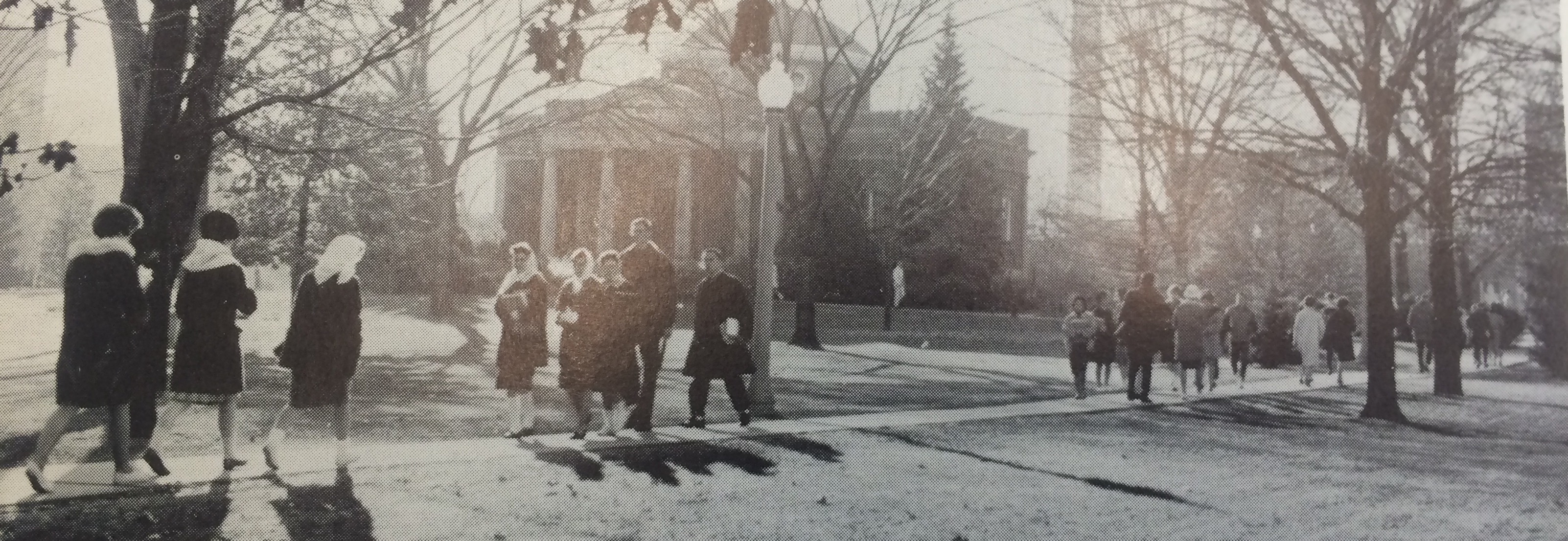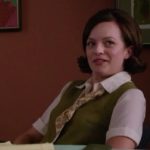During the 1960’s, Truman State University was still known as Northeastern Missouri State. Likewise, the university still had an “expected” dress code. These expectations are fairly similar to those of the 1950’s; however, there are a few differences as the 1960’s progresses.
Before getting into the nitty gritty details of the “expected” dress code, I want to set the fashion tone of Northeastern Missouri State during the 1960’s. The school yearbook pictures taken in 1963 below reveal much of the style of the decade. For women, shorter hair flipped upwards via curlers or a curling iron were very common. If one had longer or medium length hair, one wore their hair up almost as a beehive appears. For men, this decade was a time to embrace the clean-cut-look. Most men did not participate in facial hair; however, as the decade progresses to near the 70’s, men began to practice mustaches.
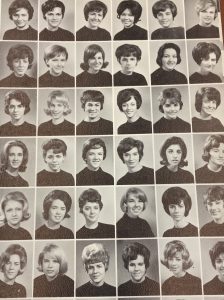
School pictures. Echo Yearbook, Northeast Missouri State Teachers College, 1963.
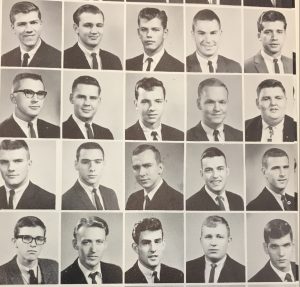
School pictures. Echo Yearbook, Northeast Missouri State Teachers College, 1963.
- Home economics. Echo Yearbook, Northeast Missouri State Teachers College, 1968.
- Peggy from Mad Men
As for style, though Northeastern Missouri State is located in Kirksville, Missouri which is a rather rural town, both women and men kept up with the latest 1960’s trends. Like the widely popular television show Mad Men, which depicts working women and men in the 1960’s. This woman above from Northwestern Missouri State appears much like Peggy depicted directly above in the TV series. Both women are wearing a collared button down shirt with a sweater vest on top. Both of these women also help support the hair trend of flipping up the ends of their short hair.
- Truman students. Truman State University, Echo, Kirksville, MO: 1975, Truman State University Special Collections.
- Mad Men characters
Above, one will see male students wearing very similar clothing to the males in Mad Men. Each are participating in wearing a suit in an interesting way. For example, one man is wearing plaid trouser pants with his colored suit jacket just like the plaid exhibited in the Mad Men character’s suit jackets.
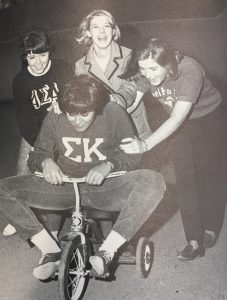
Sorority Girls. Echo Yearbook, Northeast Missouri State Teachers College, 1968.
In the 1960’s, both men and women affiliated in Greek life started to wear their letters and organizational names. These letters primarily were stitched on T-shirts or sweatshirts as depicted in the image above.

Greek Life. Echo Yearbook, Northeast Missouri State Teachers College, 1966.
As seen in the image above, both men and women are wearing their Greek organization’s letters. It is interesting how as these decades change styles, greek organization’s sweatshirts and teeshirts remain the same. My bet is that many colleges have this same situation within their changing decades. Greek clothes will always be worn.

K-dettes. Echo Yearbook, Northeast Missouri State Teachers College, 1966.
At Northeastern Missouri State, a group of women called the K-Dettes cheered for the football team. Unlike the previous decade’s flowy and pleated skirts that loosely hung right above the knee, this decade’s uniform consists of a much shorter and figure centered jumper.
To change gears, as we now understand what the fashion looked like in reality, we can now get into the nitty gritty details of the “expected” dress code. The dress code has been put into words within the handbooks, segregating the women from the men, since the school first begun in the late 1800’s. Though, it states that the dress code is not necessarily enforced, it gives women and men a basis of what to wear to specific functions or places.
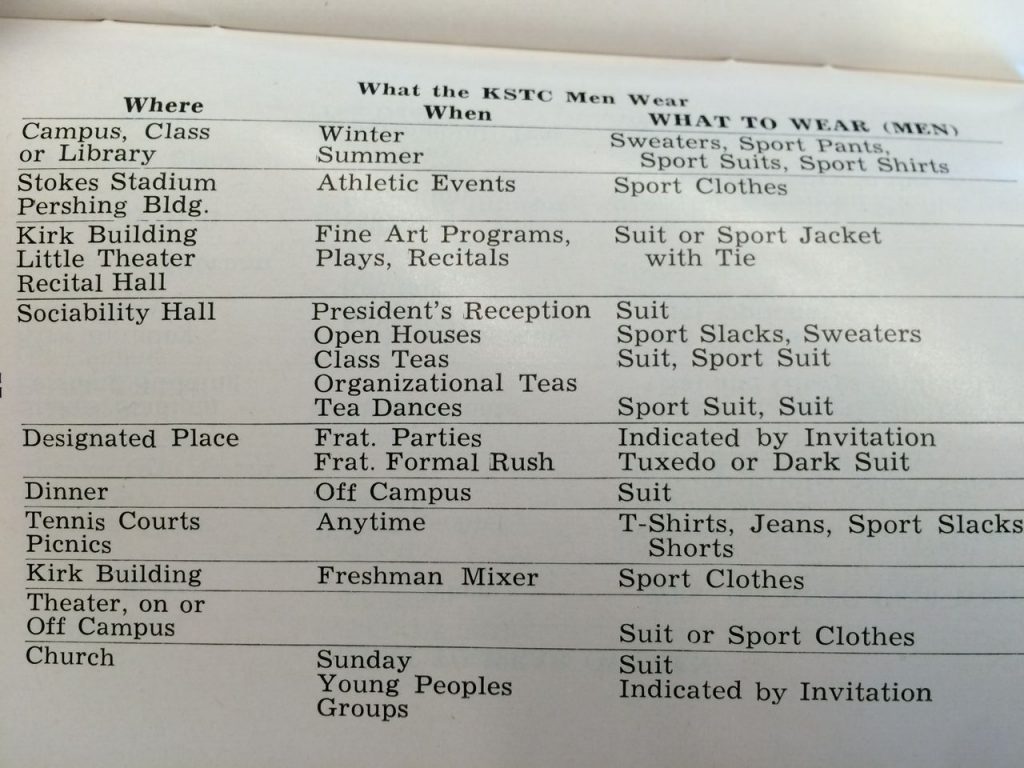
Expected Dress Code for Men. Northeastern Missouri State Handbook, Northeast Missouri State Teachers College, 1961-1962.
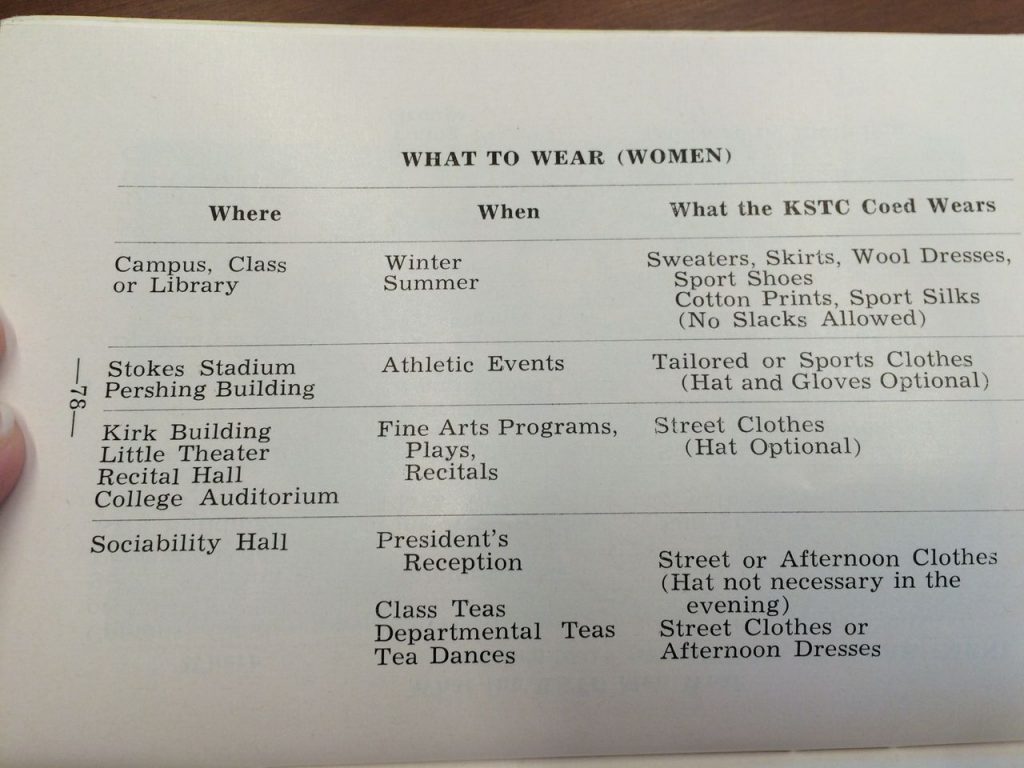
Women Expected Dress Code. Northeastern Missouri State Handbook, Northeast Missouri State Teachers College, 1961-1962.
These expected dress code charts above are seen throughout the 1960’s Northeastern Missouri State Handbooks. The dress code stayed very similar throughout the decade. In the late 1960’s, the school changed its portrayal as displayed below.
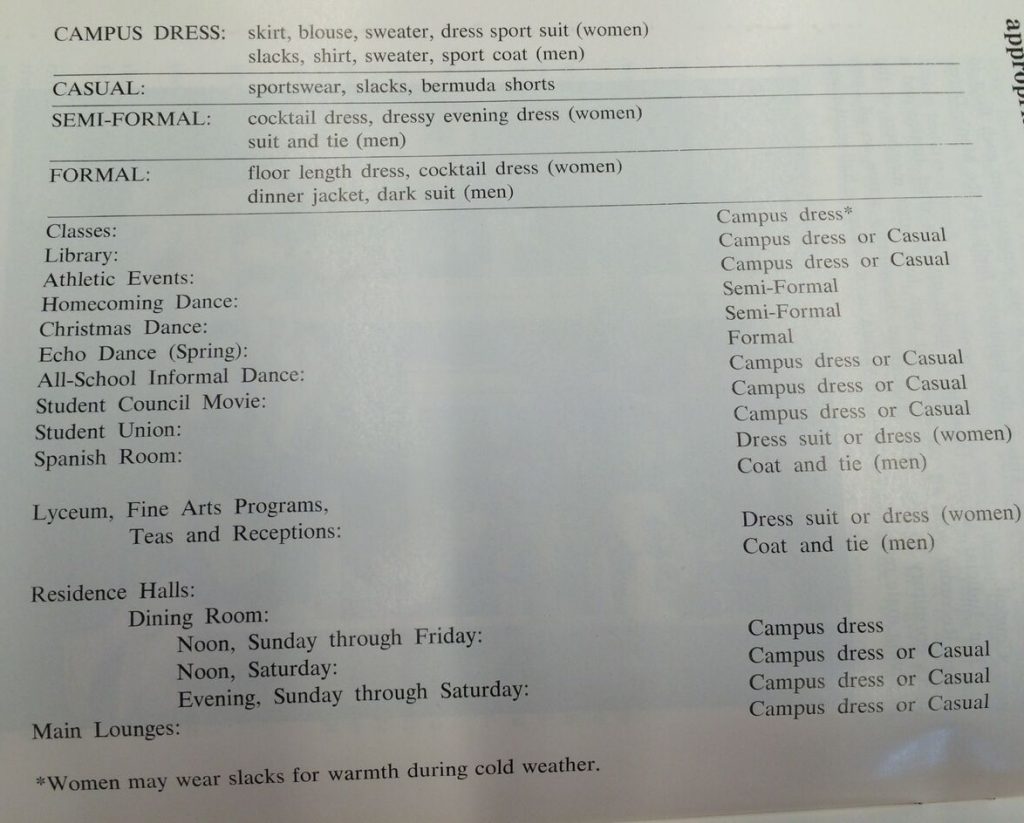
Appropriate Dress. Northeastern Missouri State Handbook, Northeast Missouri State Teachers College, 1968-1969.
As displayed above, the dress code has been modified to include both men and women on one single page in the handbook. It is also much more brief, not as specific as previously. This may be due to the fact that the school is starting to dissolve the “expected” dress code for the upcoming decades or it may be that they want to focus on other matters aside from clothing.

Quote from Page 33. Northeastern Missouri State Handbook, Northeast Missouri State Teachers College, 1968-1969.
To end this decade, I felt this quote from Northeastern Missouri State’s Handbook regarding appropriate dress for campus fits effectively to conclude. The university prides itself on giving great education to students, thus it does not want to focus on clothing. I believe the dress code was to better acquaint students who may feel nervous or confused on what to wear to certain gatherings or places as they could not just look up on the internet what others would wear. The university wants its students to take responsibility and use their best judgement on what is the most appropriate clothing to wear on campus. This excerpt follows into the 1970’s, which is next!
